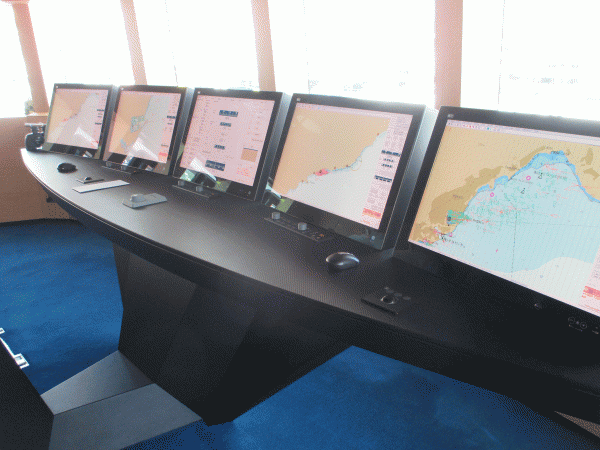A bridge to the future...
What is state of the art for the superyacht bridge? Tobias Grunwald, segment manager for superyachts at Raytheon Anschütz, speaks to SuperyachtNews.com about developments in integrated bridge technology…
Compare a superyacht bridge from ten years ago with the latest launches, and there’s no question you will notice a marked evolution. But the technology behind the scenes has seen even more dramatic change. These advances are driven not only by the continual development of software and hardware but also by the increasing expectations of owners and users who have grown accustomed to the smooth and intuitive functionality of modern smartphones and tablets. It seems a simple premise – to take that functionality and to apply it to the bridge of our yachts, but it is only fairly recently that the technology has allowed this leap.
“Last year,” begins Tobias Grunwald, segment manager for superyachts at Raytheon Anschütz, “we brought in completely new hardware architecture, including the radar hardware. It’s normally a thing we do on the computing side on a regular basis because of obsolescence in the computer world, but what’s new is that the architecture and the network have been redesigned and are now set to the latest standards.”
Essentially, Grunwald explains, this means that whereas in the past all the different elements of bridge equipment – radar, ECDIS, conning etc – were effectively self-standing units, now the whole system works from just one data management and one alarm management point. It means that, for example, the radar and ECDIS just take a different view of the same data. “That’s pretty different to what we did maybe three years ago,” he says.
It means that the advances are being made on functionality beyond just the appearance and the graphical user interface (GUI), and these advances also take advantage of new data protocol standards as set by the IMO. This translates into an intelligent alarm and monitoring system. For example, previously if the primary GPS went down an alarm would be created on several different bits of equipment simultaneously – the radar, the ECDIS, the GPS unit itself. “If you had a GPS failure you would have six to 10 alarms in the wheelhouse,” Grunwald says. “Today our systems will automatically switch over to the second GPS, and the navigator would get just one alert to check what was happening with the primary GPS without any noise in the wheelhouse.”
This also hints at a change in the basic interface, and the development of the GUI is something that Raytheon Anschütz, among others, has focused on to take advantage of new network and software solutions. The new system, using the company’s recently unveiled Conning NX software, now imports functions, previously operated from inhomogeneous hardware devices on the bridge, to software. Here, 12.1-inch touch panel PCs serve as the hardware platform to control existing and new functionalities, including but not limited to window wipers, horn, search lights, interior and exterior lighting, stern and bow thrusters, pumps, KVM switches, power management and dimming. The touch panels are the ideal complement to existing foil panel solutions for rudder steering, DP system or engine controls.
At the same time, the whole system architecture of the integrated bridge has been improved and it is beginning to redefine what constitutes state-of-the-art when it comes to the bridge. “State-of-the-art is to have all sensor data, charts and radar raw video available on the ethernet,” Grunwald says. “Sensors are no longer interfaced to the PC but to central data collectors, which adds flexibility to future system layouts and reduces cabling efforts. A double-digit number of superyachts are already sailing with the new generation of IBS architecture.” Such LAN-based data exchange also allows for ultra-lean console design, as seen on Sunrise Yachts’ 2015 launch Irimari (pictured above).
This is not, however, the end of development but rather the beginning, and the key challenge will remain bringing together rules and regulations with individual expectations and technical feasibility. “It is our job to ensure both: a superior bridge which exceeds expectations and the reliable performance to ensure safe and straightforward cruising at all times,” Grunwald concludes.
To read about other advances in bridge technology and what the future might hold both for next-generation interfaces and increased autonomy, look out for our feature in The Superyacht Report issue 169, available from 18 April 2016.
Click here to become part of The Superyacht Group community, and join us in our mission to make this industry accessible to all, and prosperous for the long-term. We are offering access to the superyacht industry’s most comprehensive and longstanding archive of business-critical information, as well as a comprehensive, real-time superyacht fleet database, for just £10 per month, because we are One Industry with One Mission. Sign up here.




